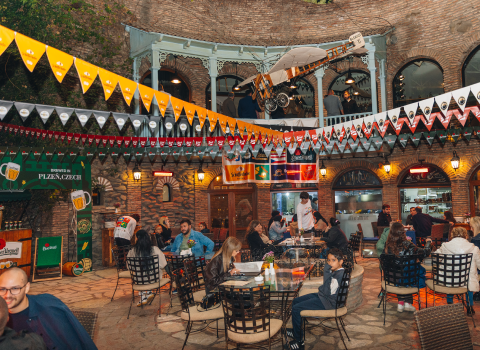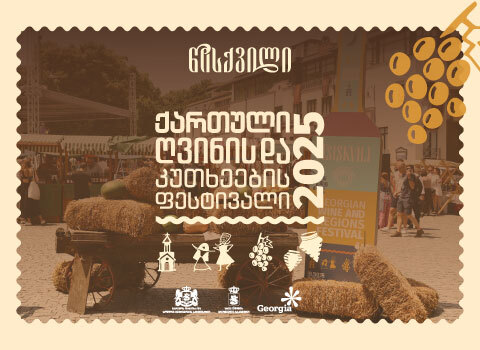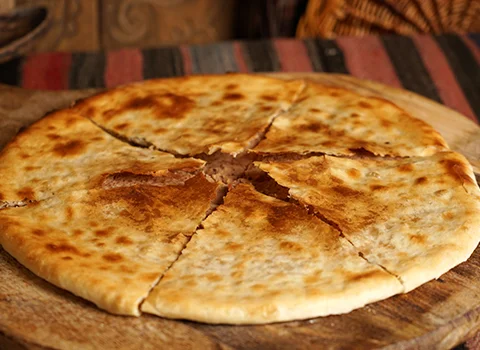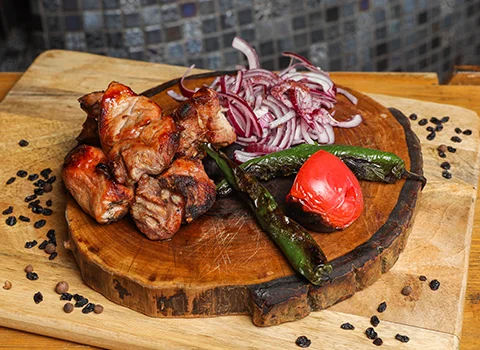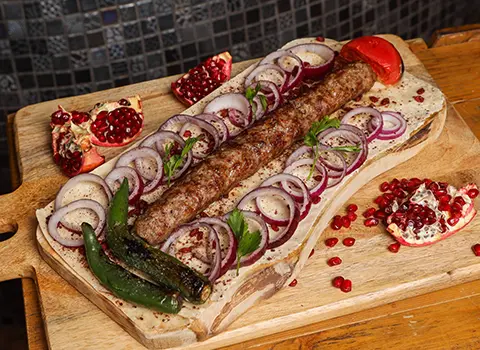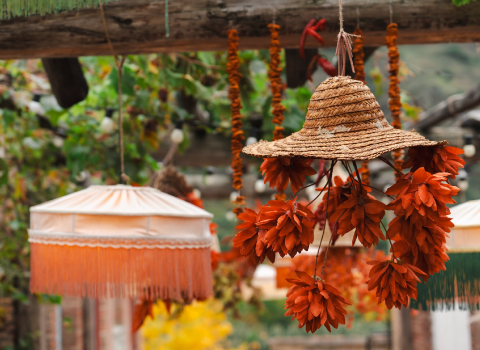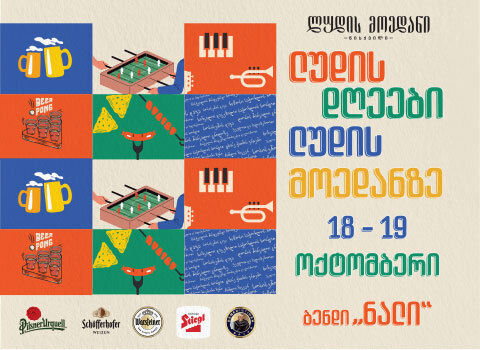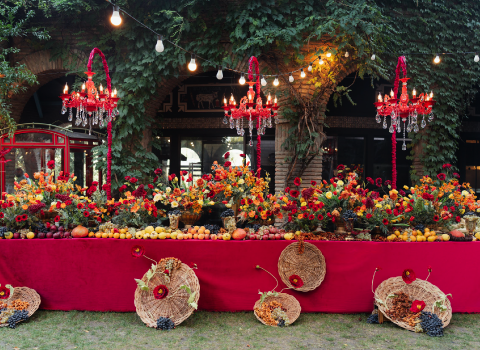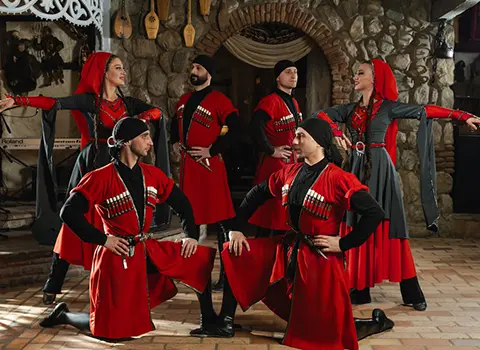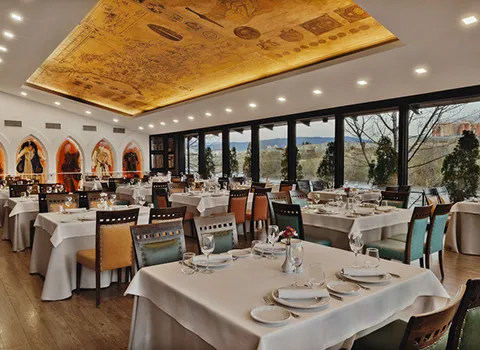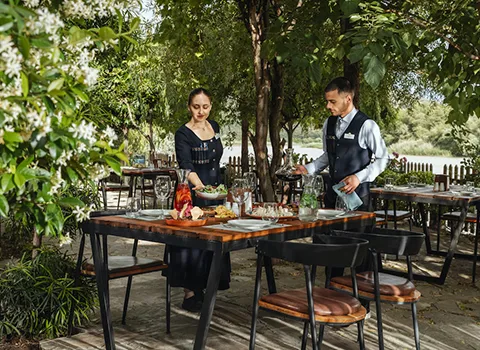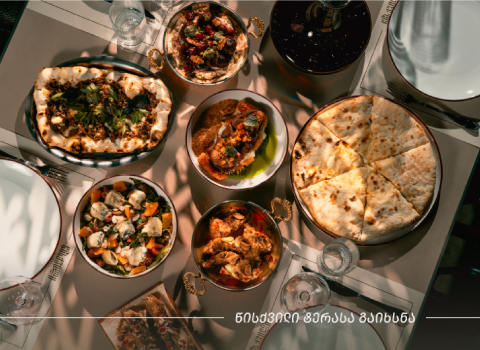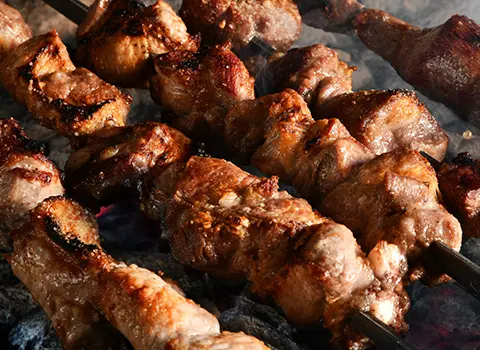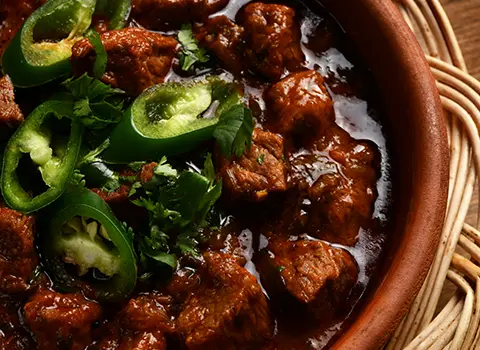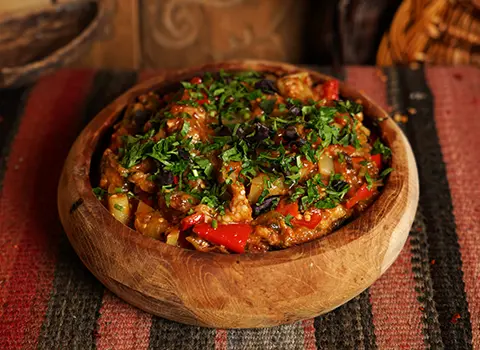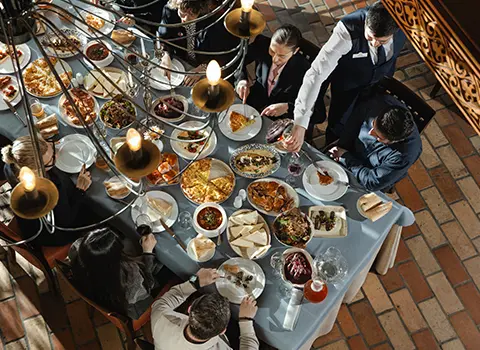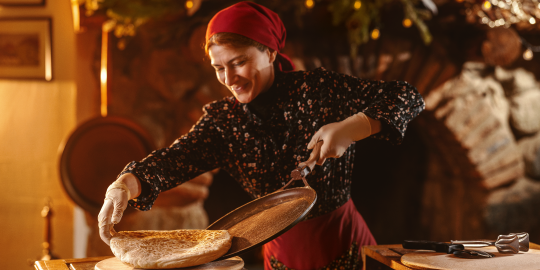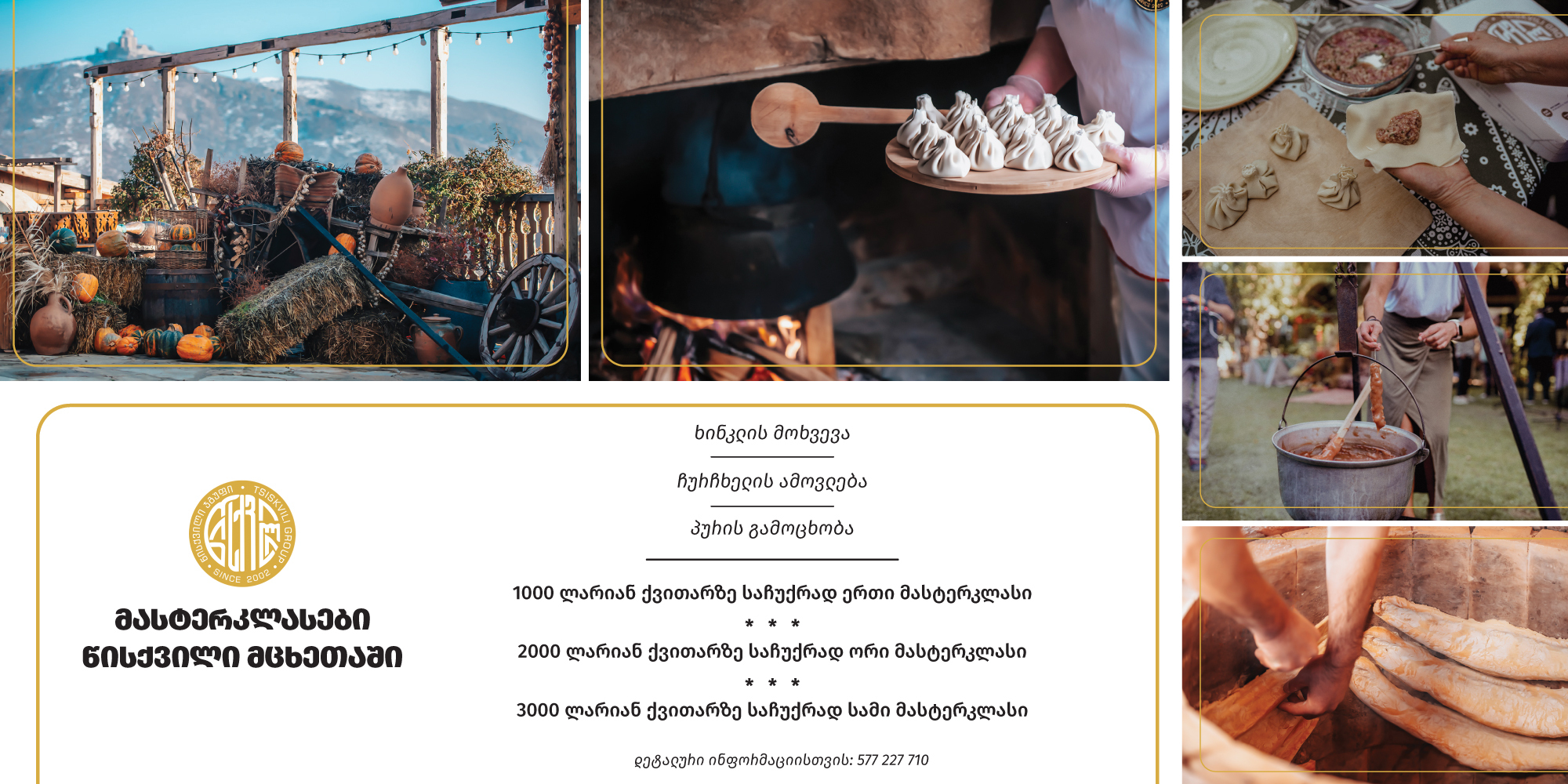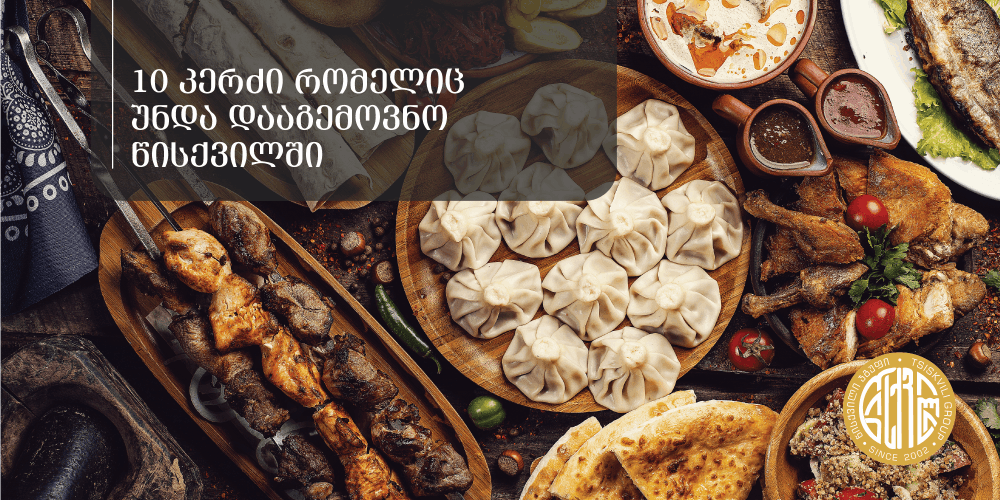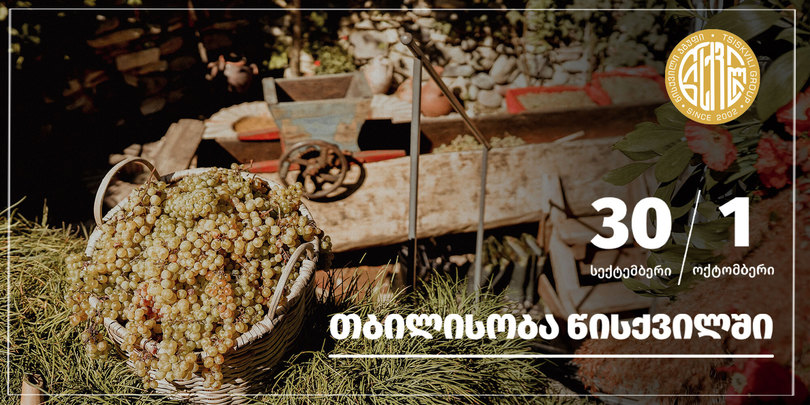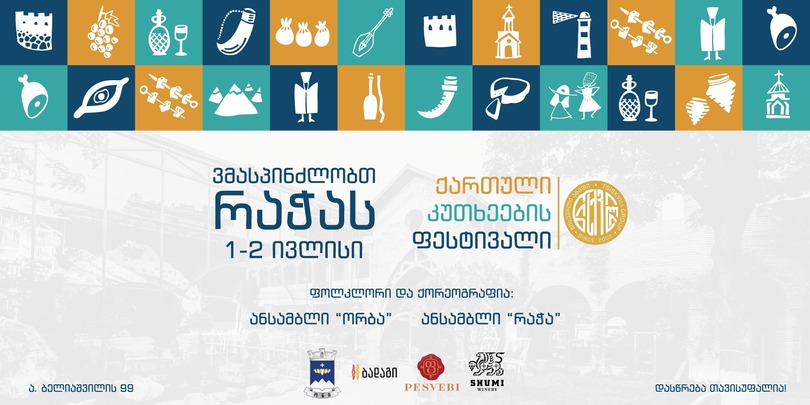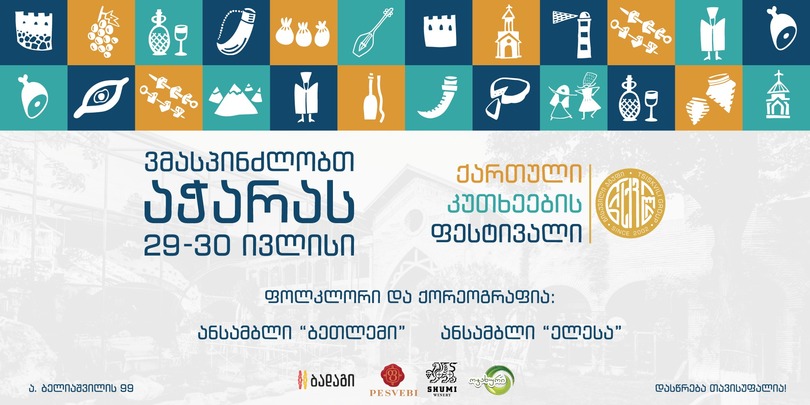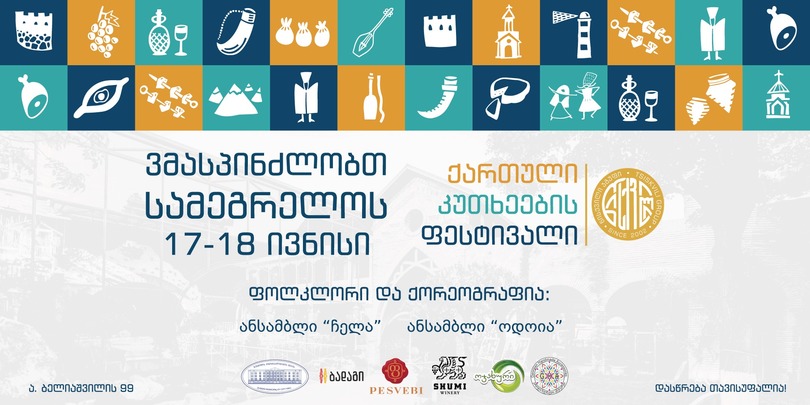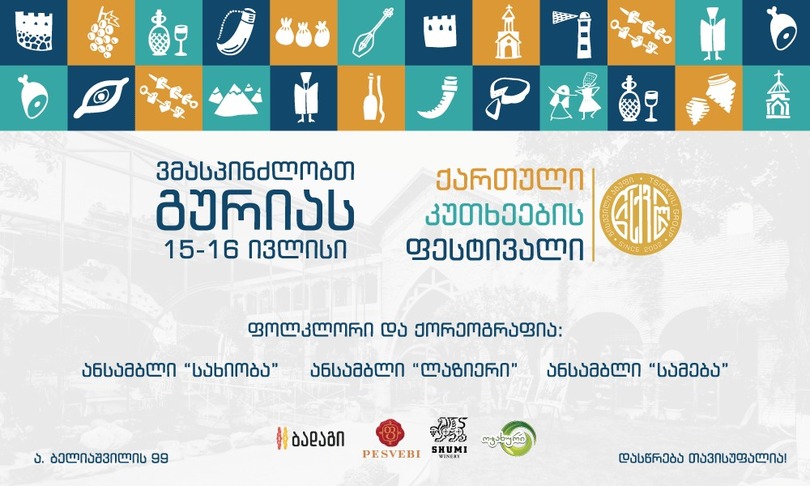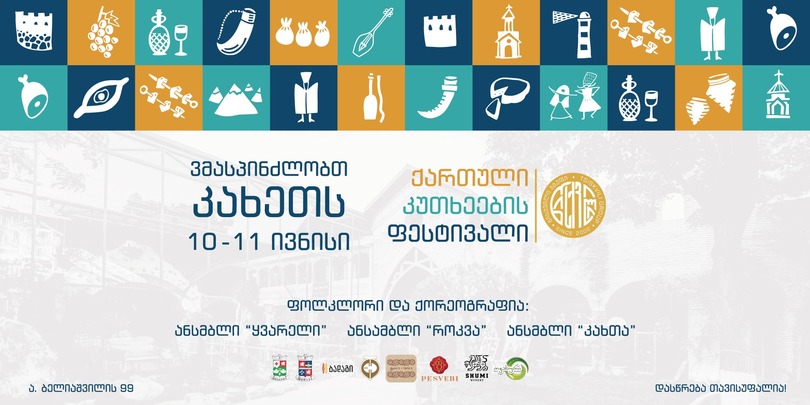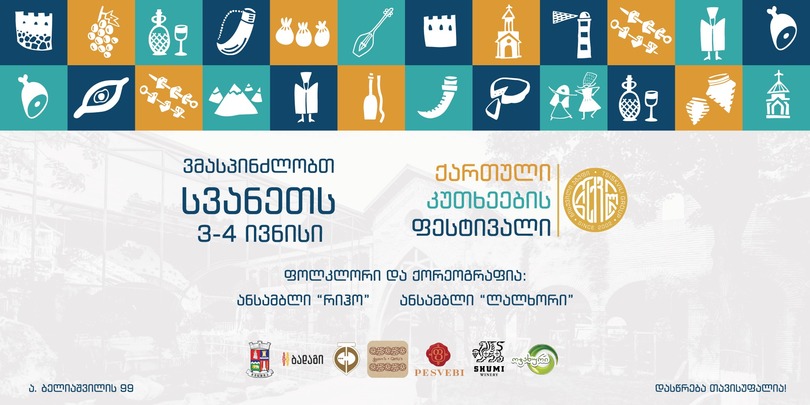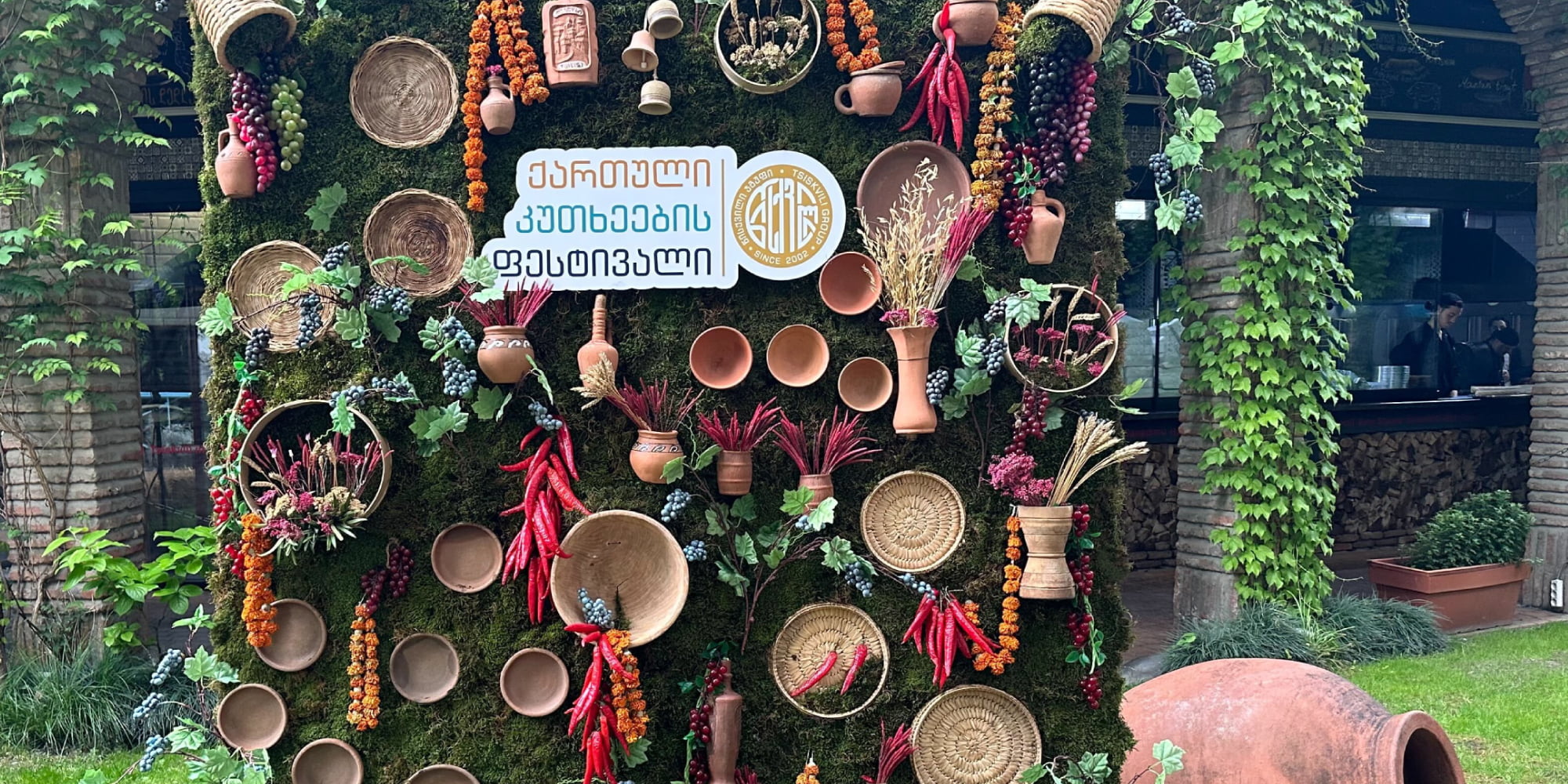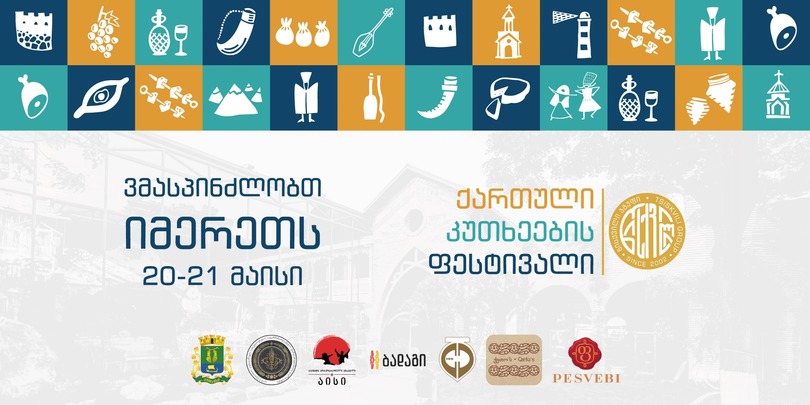
Georgian Food: 9 Most Popular Georgian Dishes
Georgian cuisine has a rich history and is characterized by unique flavors. The most famous dishes reflect the culture, traditions, and lifestyle of the Georgian nation. Behind each dish is a story closely related to various aspects of Georgian culture - from the religious holidays to the everyday customs.
Culinary traditions of different Georgian regions were formed and evolved over centuries and, in some cases, millennia. They often radically differ from each other. From the dry climate of Eastern Georgia to the humid air of the West to the harsh conditions of the mountains - all these factors have influenced the local cuisine and led to the Georgian regional cuisine being highly varied.
In the article below, we’ll discuss the history (and legends) of the 9 most popular Georgian dishes.
Khachapuri
Khachapuri is one of the oldest traditional Georgian dishes. It is assumed that people started baking it in ancient times. A dish similar to khachapuri - cheese stuffed into a round dough - first appeared in the Colchian culture and was initially a ritual food. The most common legends say that the form of Imeretian khachapuri symbolized either the sun or the moon. In ancient times, the sun was treated with special reverence in Imereti, and the form of khachapuri was an expression of respect (it is assumed that if this was truly the case, then khachapuri had a ritual significance as well).
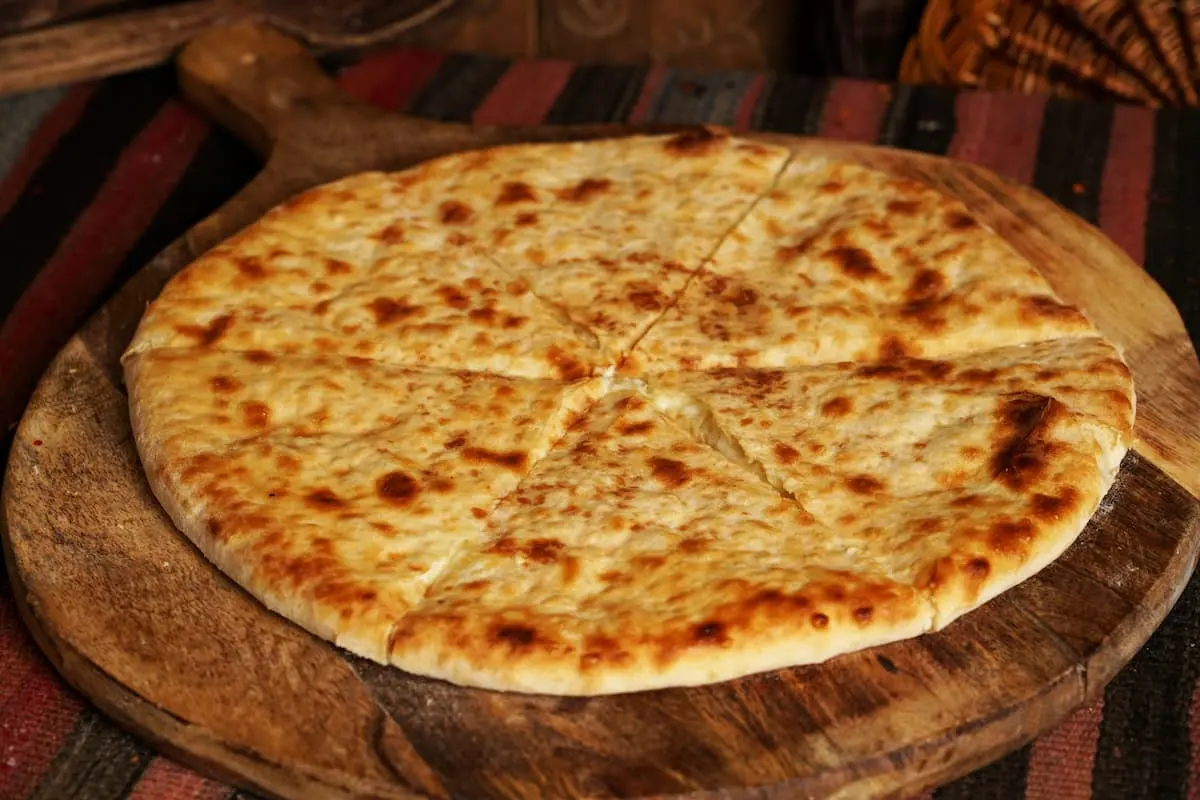
The moon legend is more romantic. It attributes khachapuri's creation to a sleepless baker. One night, when he couldn’t sleep, he saw and was mesmerized by the full moon and decided to dedicate his new creation to her. However, this legend has no historical source to back it up.
Nowadays, the most famous ritual khachapuri is the Gurian pie (the variety with a hard-boiled egg in the filling), traditionally baked for Christmas. Adjarian khachapuri, the famous cheeseboat, they say, was first baked by a Laz fisherman, and due to its convenient shape, it soon became a popular breakfast among other fishermen too. According to one version, it’s boat-shaped to simply honor the sea, but other versions claim that the form has a more loaded meaning, and the egg yolk, again, symbolizes the sun.
Interesting fact: Khachapuri is so popular in Georgia that the price of the ingredients is used to measure Georgia’s economic stats. The so-called "Khachapuri Index" shows how much it costs on average to bake a classic Imeretian khachapuri, a somewhat humorous way to assess the inflation in the country. The index developers were inspired by the American magazine The Economist’s "Big Mac index".
Khinkali
We know even less about Khinkali’s history than that of khachapuri. It’s believed that people from one of the mountainous regions of Georgia created it first. However, whether it was Mtiuleti, Pshavi, or Khevsureti - no one knows, and no region is willing to give up the claim on authorship. Originally, Khinkali was exclusively a meat-based dish (traditionally, only lamb and beef were used) and was mainly a food of shepherds and hunters. Khinkali withstands cold well, is easy to carry, quick to prepare, and very calorie-dense. All these made it a very convenient option for people who had to walk long distances on difficult terrain. There’s also a legend that khinkali, like khachapuri, was originally ritual food offered to the sun, and the shape was inspired by Borjgali - an ancient Georgian Sun symbol with seven rotating wings.

Plains started preparing khinkali en masse in the XIX-XX centuries, propelled by rapid urbanization. This was the time of the biggest transformation in the khinkali recipe, as the more popular pork quickly replaced lamb in the filling, with meat becoming optional not long after, swapped for mushrooms, potatoes, etc. The change was likely initially due to the high demand for an option fit for Lent).
Mtsvadi
Mtsvadi is often theorized to be the oldest Georgian dish. According to legend, it was the first dish to be prepared in the region - right when people first learned how to heat process food and the hunting culture spreading. What distinguishes it from other similar BBQ dishes is that it was traditionally grilled on skewers made of vine branches, which gave the dish a special aroma and flavor.
Even today, grilling Mtsvadi over Tsalami (vine branches) fire is traditionally considered the "correct" cooking method due to the characteristic aroma of its smoke. The first Mtsvadi was probably made from the meat of wild animals, then pork and beef became more common, and finally, sheep - common in the mountain regions - joined the list.
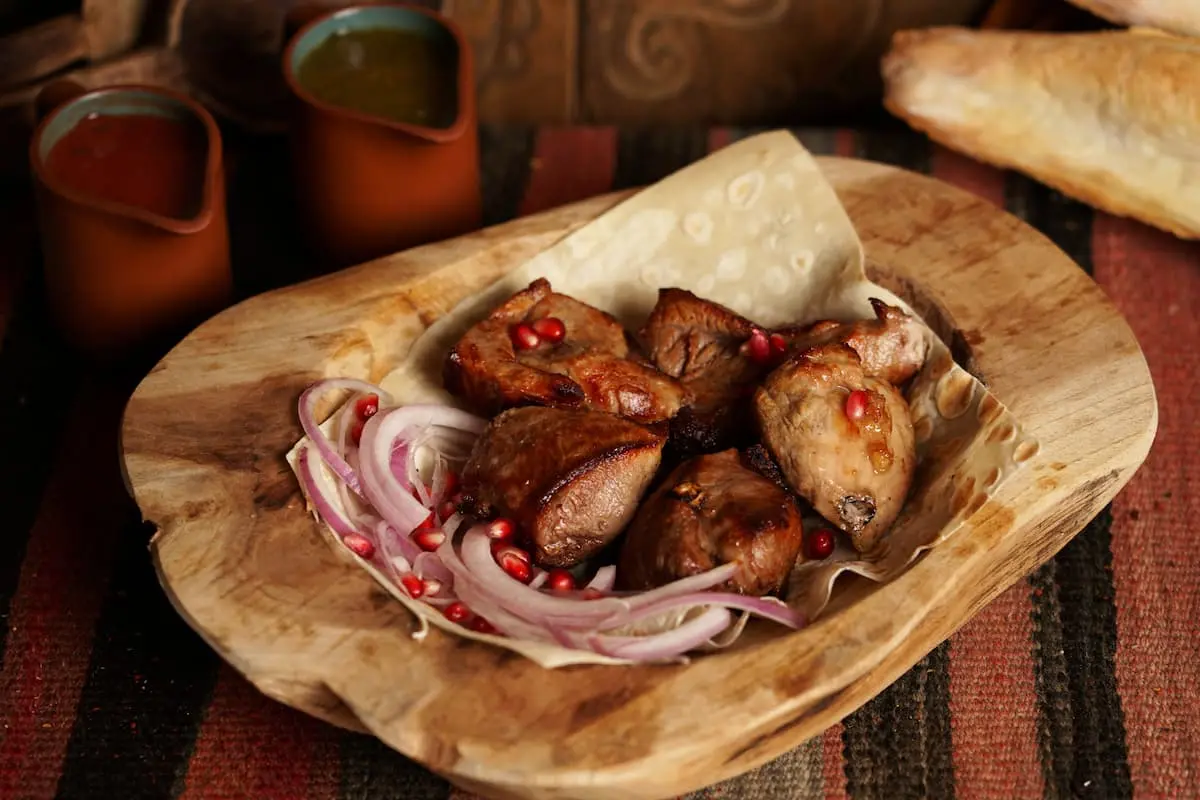
Similar to khinkali, urbanization caused the dish to become more diverse. Today, mtsvadi is associated with cooking techniques rather than with specific ingredients. The chunks should be put on a skewer, grilled on an open flame, and have a noticeable smoky aroma. Meat, fish, and vegetable mtsvadi are all popular today. However, pork mtsvadi is still considered to be the most authentic version of the dish.
Pkhali
Pkhali was originally a much simpler dish than it is today. Based on archeological samples, it is assumed that something similar was already being prepared in 5000-3000 BC. This was a period of agricultural development in Georgia, and the consumption of vegetable food rapidly became more common.

Initially, pkhali was simply a mass of chopped local herbs or vegetables. The farmers used what was locally raised, without much thought to it. That's why today so many types of vegetables are used as the basis for the dish. It became more elaborate sometime in the Middle Ages when people started mixing this mass with walnuts, vinegar, and spices.
In the XIX century, when Georgian culinary traditions started being recorded and systematized, Pkhali was already mentioned as one of the main dishes of Georgian cuisine. During this period, the so-called "classic" pkhali recipes were developed - and are still used today.
Lobiani
It might be surprising, but Lobiani, while often considered a khachapuri substitute for Lent, is actually much "younger," and assumed to be from the late Middle Ages. People started actively cultivating beans in Western Georgia around the XVI century, first in Guria and then in Samegrelo. The first Lobiani is typically associated with this period. Protein-rich beans proved to be a convenient and affordable alternative to meat during Lent, and soon gained a foothold in regular day-to-day life as well.
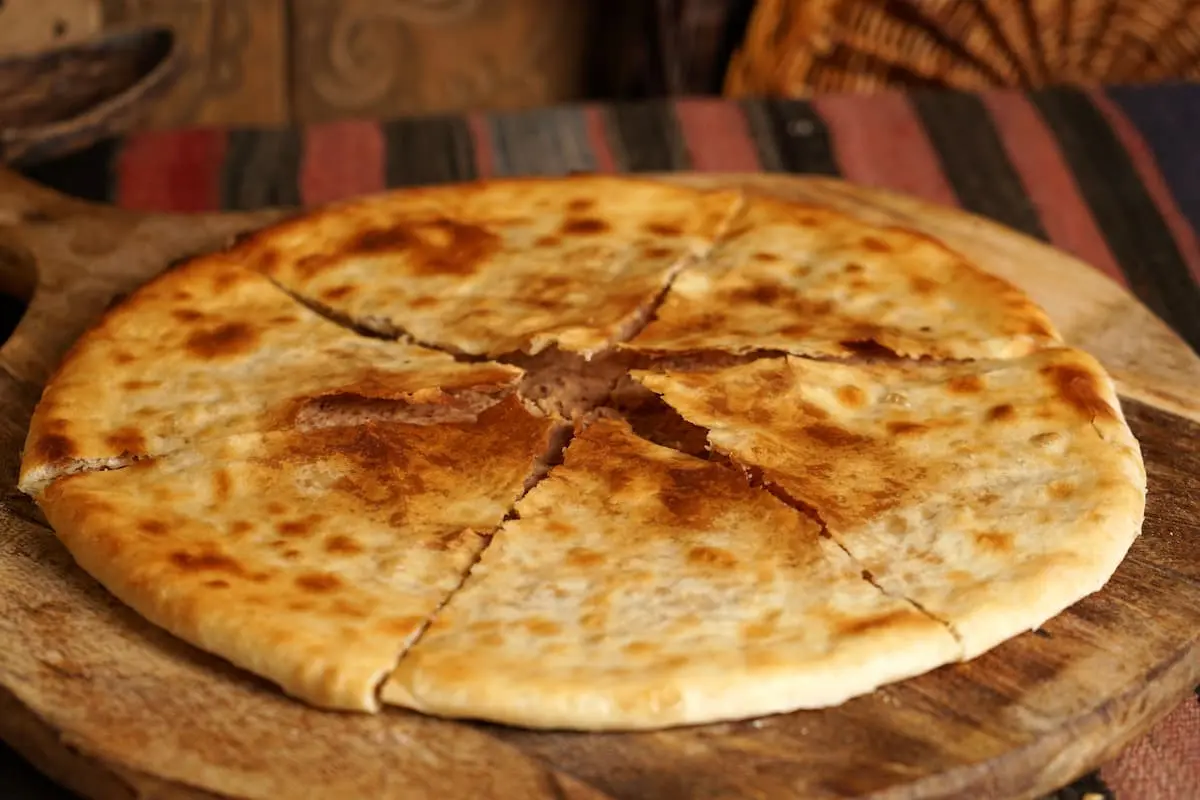
Lobiani’s popularity particularly increased during the XVIII and early XIX centuries. During this period it spread outside Western Georgia and each region created its own variation. For example, Imeretian lobiani has a softer filling, while Racha prefers it drier and spicier, and often adds a local specialty meat product - Rachan ham - to the filling.
Eggplant with Walnuts (Badrijani Nigvzit)
According to Georgian historian, Ivane Javakhishvili, eggplant was brought to Georgia in approx. XII-XIII centuries, although it is impossible to be more specific. It’s generally assumed that it came from Persia or Arab countries. At first, it was considered a medicinal plant, but over time people started using it for cooking.
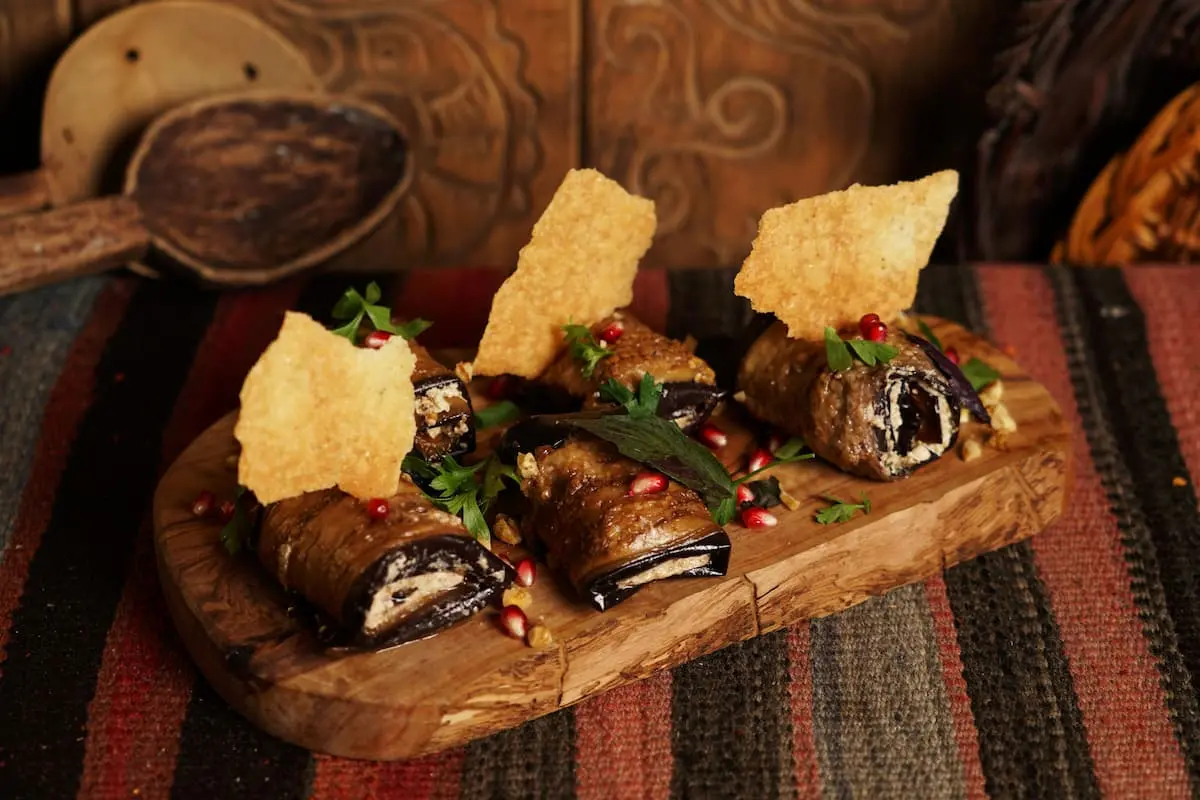
Exactly when it became common to stuff roasted eggplant slices with walnut paste is unclear. Gastronomic scholars mostly agree that the story claiming that the dish was created in Kakheti in the XVI century seems to be the closest to the truth. Eggplant spread the fastest in this region, and walnuts were grown in abundance in the Kakheti region. So walnuts being incorporated into the dish here has a strong basis in reality.
There is a theory that eggplant with walnuts was originally a dish for holidays, especially during fasting periods. Traditionally, the dish takes a lot of time and effort to prepare (soaking and squeezing the eggplants, chopping walnuts by hand, mixing, etc.), so it was prepared for weddings and parties when meat wasn’t an option. How true this theory is? Today it’s impossible to say.
Satsivi
As with most traditional Georgian dishes, the exact date of Satsivi’s creation is unknown. Historians think that Satsivi was originally created in Western Georgia, either in Imereti or Guria. These regions are known for walnut cultivation and the abundance of nut-based dishes. Barbare Jorjadze, the author of what is considered the first official Georgian recipe book, listed this dish under the name of Gurian Satsivi.

It’s highly likely that initially Satsivi was only served among aristocracy. The main ingredients, especially the turkey, were expensive. Barbare Jorjadze's recipe confirms that people used a smaller amount of walnuts and more vinegar than is common in modern recipes.
Satsivi’s popularity dramatically increased in the XIX century. During this period it became an integral part of the New Year's feast. The tradition spread so quickly and entrenched itself so firmly that in the XX century, during the Soviet period, its popularity only increased, despite the fact that some of the ingredients were hard to come by. Today, it’s one of the most recognizable dishes of Georgian cuisine. Many believe, Satsivi well demonstrates that traditional Georgian cuisine can be much more complex and sophisticated than it seems at first glance.
Ghomi (and) Elarji
The history of Ghomi and Elarji is one of the most interesting cases in Georgian gastronomy - over the years it has been fundamentally transformed. It’s doubtful that the first people cooking Elarji would have recognized the dish in its present form, even if they ever got a chance to taste it.

See, Ghomi is not actually the name of a dish, but the local name of one of foxtail millet. One of the oldest grains grown in Georgia, it was used for consumption as early as the Neolithic era (5000-3000 BC). At first, the grains were simply ground and cooked into a porridge. A simple peasant food that was filling and easy to prepare, it became particularly popular in the mountainous regions of Western Georgia, where most grains were hard to grow. During the Middle Ages, Ghomi (the grain) was widely used in Western Georgia, particularly Samegrelo. During this period, different techniques for cooking Ghomi (the dish) were developed, likely including kneading soft cheeses into it - and a new dish, elarji, was created.
The dishes were radically transformed at the end of the XVII century when corn came to Georgia and began to replace foxtail millet. Today, you will rarely find authentic Ghomi and Elarji made from millet, but the names have stayed the same, and the dishes remain an important part of Samegrelo’s culinary identity.
Chakapuli
Chakapuli is a seasonal dish usually prepared from late April to mid-June. It is especially popular in Eastern Georgia. It’s believed to have first been prepared in the Kakheti region and is closely associated with the region's shepherd traditions.
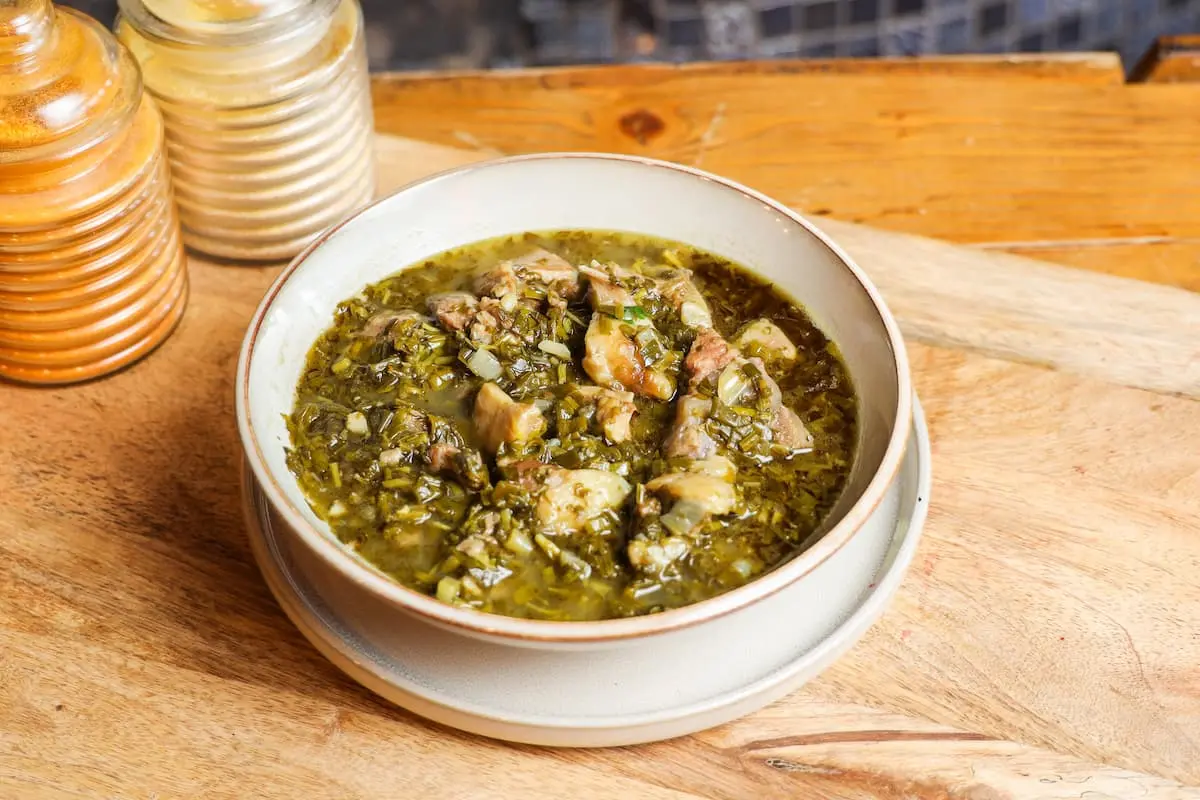
It is assumed that the dish is several centuries old. The name "Chakapuli" comes from the Turkish language. It meant "decorating" or "dressing" and refers to the cooking method - the ingredients are boiled together in a large pot.
The traditional recipe calls for lamb or goat kid meat, green cherry plums, lots of herbs, and spices. At the beginning of the XX century, during rapid urbanization, the dish spread beyond the Kakheti region and it became common to replace lamb with veal, especially in Tbilisi.
Where to Try Traditional Georgian Dishes:
If you wish to taste authentic Georgian dishes in an aesthetically attractive environment, the "Tsiskvili Group" restaurants are at your service. Our dishes are known as exemplary for their traditional flavors. "Tsiskvili Group" uses only high-quality natural ingredients to ensure the reliability and authenticity of the menu. Our experienced and attentive staff provides exceptional service, ensuring your experience is enjoyable in every way.
You can taste all the dishes listed above - from khinkali and khachapuri to satsivi and chakapuli (when in season). The restaurant’s atmosphere, cultural program, and professional staff will help you get fully immersed in the Georgian hospitality tradition. Visiting the "Tsiskvili Group" restaurants is an opportunity to experience not only Georgian cuisine but also Georgian culture in many ways.
Other news
On December 31, New Year’s Eve, the “Tsiskvili's” “Theatre” will host the brightest and most cheerful celebration of the year — a night filled with music, joy, and unforgettable emotions.
Beer Days have already become a beloved tradition for Tsiskvili and its guests. This was the third consecutive year that Beer Square hosted the event.
Those who wanted to celebrate Svetitskhovloba in a special setting, relax outside the city, and enjoy exquisite dishes against the backdrop of stunning views were hosted at Tsiskvili in Mtskheta.
If you want to spend a pleasant and fun evening, don’t miss Beer Days at Beer Square!
Over the past decade, Tsiskvili Group has received numerous awards in various categories, highlighting its significant contribution to the growth and success of the Georgian tourism sector.
Guests attending the event will have the chance to participate in preparing traditional Georgian dishes. You’ll be able to take part in hands-on masterclasses, including khinkali wrapping, churchkhela making, grape treading, chacha distillation and tasting, and much more.
Ethno Tsiskvili is a restaurant that has consistently proven itself to be the best Georgian restaurant in Georgia, garnering numerous local and international awards over the years.
В Старом Тбилиси, на площади Горгасали, где столетия назад располагался главный рынок города, в течение двух дней проходил Фестиваль грузинского вина и регионов. Гости смогли попробовать традиционные грузинские блюда и аутентичные местные вина.
On May 31 and June 1, the “Festival of Georgian Wine & Regions” will take place in Old Tbilisi, at one of the city’s main tourist destinations—Gorgasali Square. The event is organized by Tsiskvili Group and Meidan Group.
If you’re diving into Georgian cuisine, you’ve got to try Lobiani. This beloved pastry, stuffed with a savory bean filling has a special place on a Georgian table, and it’s one of those dishes that every region has its own spin on. There’s tradition, flavor, and history—and every bite tells a story.
In 2002, a restaurant opened on the banks of the Mtkvari River in Tbilisi, completely transforming perceptions of Georgian dining spaces.
Wedding planning is simultaneously a joyous and stressful process. Everything needs to be perfect on this day - the environment, the mood, the dishes. That's precisely why couples entrust us with organizing this special day.
For centuries, the Georgian Supra (feast) has been much more to the Georgian people than just lunch or dinner. It's a tradition where family members and friends gather around a large table, enjoying delicious traditional dishes, reminiscing about childhood stories, and sometimes even singing traditional Georgian polyphonic songs called "Mravaljamieri."
Although you can taste kebabs in many restaurants, finding a truly noteworthy version of the dish is often challenging. That's because meat quality, preparation method, and ingredient selection all play crucial roles - mess up one part and you’ll mess up a whole dish. This blog will briefly introduce you to the main criteria that will help you make the best choice—whether it's lamb, veal, chicken, or mixed meat kebab.
Enjoy delicious grilled dishes and authentic Georgian flavors, alongside a wide selection of German, Austrian, Dutch, and Czech beers. With top-quality service, an outstanding atmosphere, and live music.
For those looking to celebrate "Svetitskhovloba" and relax outside the city, they discovered a fantastic atmosphere, delightful dishes, and a perfect mood at “Tsiskvili in Mtskheta”.
If you’re seeking a cozy atmosphere paired with high-quality cuisine, the beer square is the perfect destination. Don’t miss out on this exciting two-day beer festival!
Guests enjoyed unforgettable moments in a yard filled with autumn leaves and delicious dishes, where Georgian hospitality and joy were seamlessly intertwined.
Georgia's cultural heritage, shaped over centuries, stands out in visitors’ eyes with its diversity and depth. One of such standout elements is local folklore, including traditional dances and songs.
Georgia is known as the birthplace of wine. Archaeological data confirms that winemaking in the region began approximately 8,000 years ago, giving the country a uniquely important place in the history of viticulture.
Georgian traditional cuisine is famous for its diversity of ingredients and flavors. But you might be surprised to learn that these dishes also reflect culture, lifestyle, and history. Adjarian khachapuri is a clear example of such a dish.
Still haven’t decided what to see in Tbilisi and, most importantly, how to experience Georgian hospitality? We assure you that the capital of Georgia is a place rich in historical and cultural monuments, and you certainly won’t have time to get bored. And you should definitely visit the "Tsiskvili Group" restaurants along the way to get an authentic Georgian culinary experience.
To mark this special day, the restaurant's courtyard was beautifully decorated, with each corner thoughtfully arranged for guests to take stunning photos, making the event even more charming and memorable.
Georgian cuisine has a rich history and is characterized by unique flavors. The most famous dishes reflect the culture, traditions, and lifestyle of the Georgian nation. Behind each dish is a story closely related to various aspects of Georgian culture - from the religious holidays to the everyday customs.
Large-scale celebrations and corporate events can be important times in our lives that deserve special attention. Be it a birthday, anniversary, wedding, engagement, or corporate event - all of them require careful planning so the guests can have a pleasant time.
With the summer in full swing, more and more people face the challenge of finding comfortable places for meet-ups and hangouts.
"Tsiskvili Group" has opened another new restaurant - "Tsiskvili Terrace", which will host guests from today. It is located in Tbilisi, on the Zviad Gamsakhurdia Embankment 80, and is the 8th restaurant in a row of "Tsiskvili". The new branch combines a hall, terrace, and stained glass spaces.
Initially, "Tsiskvili" was a restaurant for 100 guests, which was built in 2002 on Beliashvili Street. At that time, there was no transport in this area, so no one believed that in a few years it would become a complex of this scale. Originally, there was "Ethno Tsiskvili," which still maintains trust and quality, and as a result, holds an unshakable position in the market.
One of the most distinctive dishes of Georgian cuisine is Mtsvadi. Its history spans centuries. Unlike American barbecue, which is cooked on a special closed grill, Mtsvadi is prepared over an open fire - The meat put on a skewer is placed on a slow fire and gradually approaches its final condition.
Today's pace of life differs significantly from the past. While going to restaurants and cafes was more common in the past and there was enough free time for it, today, due to the fast-paced and busy lifestyle, customers prefer to order dishes delivered to their homes. Against this backdrop, the popularity of delivery services is rapidly growing, as it allows saving time and energy.
In recent years, vegetarian and vegan diets have become increasingly popular. People choose this type of diet for various reasons, including ethical considerations related to the use of meat, personal health concerns, environmental protection, and more.
Georgia is recognized as one of the unique gastronomic destinations. Its capital, Tbilisi, has been an important trade and cultural center for centuries, which has significantly contributed to the development of rich and diverse culinary traditions.
The centuries-old history of Khinkali begins in the mountains of Georgia. For the residents of the mountain, especially Fshavi and Tusheti, khinkali was a suitable dish for cold winter days - they gathered around a freshly lit fire and ate a hot dish full of broth.
Family outings, including restaurants, are the best way to spend time, relax and make new discoveries. But in this process, important obstacles appear.
For tourists, all "Tsiskvili" restaurants are a must-visit when in Tbilisi and its environs. In recent years, new locations outside the city have been added to the "Tsiskvili" restaurant chain, including Tskneti and Mtskheta.
Few people know that "Ethno-Tsiskvili" has a long and very interesting history of development. Everything started in 2002. At that time, the street where the restaurant is located was not infrastructurally organized, nor was it distinguished by a normal road.
If you plan a tour of Mtskheta and decide to treat your tourists to traditional Georgian cuisine at our restaurant, where they will enjoy an interesting environment and beautiful views, we will offer you complimentary master classes based on your total expenditure.
Khinkali, Mtsvadi, kebab, and other traditional Georgian dishes, as well as a grill menu - this is a small list of Beer Square dishes, which the chefs will prepare in front of you on an open grill.
If you're planning a trip to Georgia and seeking a place to savor authentic Georgian cuisine, look no further than the Tsiskvili restaurant. Even for locals, this article is a valuable read, as it showcases the best of Georgian culinary delights. Discover the 10 outstanding dishes that Tsiskvili has to offer, ensuring an unforgettable taste of Georgia's rich flavors.
Guests will be able to taste a specially created menu featuring Tushetian khinkali and grilled dishes. They will also have a wide range of premium beers to choose from, including German Warsteiner, Schofferhofer, unfiltered Benedictine, Dutch Grolsch, and Czech Pilsner. Additionally, guests will have the opportunity to purchase beer at a special price during Beer Days.
In an extraordinary collaboration that bridges the worlds of art and entertainment, Tsiskvili Group's "Theatre" and Ria Keburia Art Space are all set to redefine the traditional art auction with an innovative and immersive live auction experience.
On September 30 and October 1, visitors to Tsiskvili restaurant will be greeted by the autumn mood. A yard filled with delicious sweets, authentic Georgian dishes, folk and choreographic performances - this is just a glimpse of what Tsiskvili will offer to the public in Tbilisi.
A new branch of the Tsiskvili Bazari has opened in Avlabari, within the multifunctional residential complex - Moedani, offering a wide range of Georgian and European products, as well as semi-finished products made with healthy ingredients and ready meals all in one space.
This weekend, on July 1-2, at the "Festival of Georgian Regions," representatives of Racha will introduce guests to the culture and unique cuisine of their region.
"Festival of Georgian Regions" will host another outstanding region, Adjara. Representatives of Adjara will introduce their culture and cuisine to the guests in the yard of Tsiskvili on July 29 and 30.
For those getting ready for Tbilisi Open Air and excited to meet their favorite artists, there's another pleasant surprise awaiting - Tsiskvili restaurant has joined the Festival.
Masterclasses will be offered in the yard, allowing participants to cook unique Megrelian dishes with the chefs. An exhibition and sale will also be featured, offering products from Megrelian and local Georgian companies.
"The Festival of Georgian Regions" will continue with Guria days in the yard of Tsiskvili. Representatives from Guria will present their region to guests on July 15 and 16.
On the weekend of June 10-11, The culture of Kakheti will be showcased in the Tsiskvili's yard. offering guests authentic folklore, choreography, and the delights of Kakhetian wine and cuisine.
On June 3-4, Svaneti days were celebrated in the Tsiskvili's yard. During these two days, guests had the opportunity to indulge in outstanding Svanetian dishes, experience the folklore and choreography of the region, and take part in various activities.
On June 3 and 4, guests at Tsiskvili Yard will embark on a journey to Svaneti as part of the "Festival of Georgian Regions," where they will learn about its culture and savor the unique flavors of Svan cuisine. Svaneti is the second region, after Imereti, that the "Tsiskvili Group" is presenting to Georgian and foreign guests.
On May 20-21, Tsiskvili hosted Imereti. During the two days, guests had the opportunity to get to know this region of Georgia through its distinctive folk songs, choreographic numbers, and dishes, and to participate in various activities.
On May 20, the "Festival of Georgian Regions" will open in the yard of Tsiskvili with the days of Imereti, introducing Georgian and foreign guests to the authentic culture and gastronomy of Imereti.
The "Festival of Georgian Regions" is another initiative of the "Tsiskvili Group" aimed at popularizing the culture, folklore, choreography, and gastronomy of the country's various regions.
Approximately 400 specially invited guests attended "The Show," enjoying both the captivating performance and an exquisite dinner crafted specifically for the occasion under the guidance of Alex Natadze, the culinary expert behind the "Theatre" brand.
"The Tsiskvili Group proudly introduces its latest venture, a cutting-edge concept space - 'Theatre,' located on Beliashvili Street. This versatile venue comprises a stage and pavilion designed to host a diverse array of styles and genres. In a unique twist, guests attending events at 'Theatre' will also have the opportunity to enjoy a delightful dinner.
"On October 27-28, Tsiskvili Restaurant played host to a vibrant two-day beer festival at Beer Square. Attendees had the opportunity to savor premium-quality beers, including German Warsteiner and Schoferhofer, Dutch Grow, and Czech Pilsner—all available at half price during the festival.
"On October 28, Georgia hosted its inaugural national real estate awards ceremony, the Property Georgia-FIABCI-Georgia Prix D'Edx d'A Excellence Awards. Winners across 11 categories were unveiled during the event, with the restaurant Tsiskvili receiving the coveted Golden Award in the Retail Category.
For beer enthusiasts looking for a quality brew and a good time, a two-day celebration awaits. On October 27-28, the beer festival will take place at the beer square in Tsiskvili, offering a variety of entertainment activities and live music.

